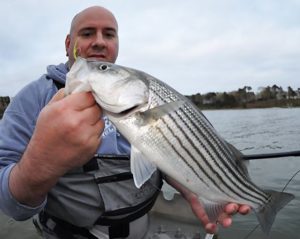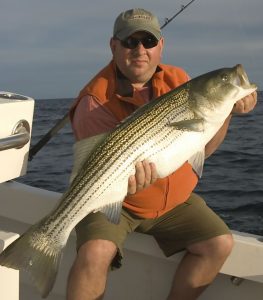BY GEORGE CLONDAS
I was at a dinner party this spring when a friend turned to me and asked,
“George, you like to fish, right?”
“Yes,” I said.
“Can you teach me to fish?”
“Sure!” I replied.
“What do I need to get?”
That simple question got me thinking. I’ve been fishing for years, and over time I’ve accumulated more knowledge—and more gear—than I know what to do with. Now someone’s asking me to distill a lifetime of experience into a few pieces of advice.
When I first started out, I learned by hanging around tackle shops and listening to old timers wax poetic about the “good old days” of fishing. Now that I’m in my 50s, most of those shops—and those old timers—are gone. I’ve realized now I’ve become that old timer. These days, most of the small, mom and pop tackle shops have been replaced by big box stores. But there are still a few gems left. On any given afternoon—especially if the weather’s bad—you might find an old salt sitting on a stool, sipping coffee (or maybe something stronger) and reminiscing about the glory days.
But enough reminiscing—time to get into it.
Let’s Get Legal
 First off, this isn’t a comprehensive fishing guide, but it’ll get you pointed in the right direction so you can have fun and stay within the bounds of the law.
First off, this isn’t a comprehensive fishing guide, but it’ll get you pointed in the right direction so you can have fun and stay within the bounds of the law.
I’m going to focus on saltwater fishing, since that’s mostly what I do here on the Upper Cape. Plus, saltwater fishing starts to heat up around the time this article is coming out. I do some freshwater fishing in the spring, but only until the saltwater species show up. Step one: Get a fishing license.
Visit www.mass.gov/buy-fishing-or-hunting-licenses page to purchase your fishing, shellfishing or hunting license. Once you’ve got your license, be sure to check out the recreational saltwater fishing regulations at www.mass.gov/info-details/recreational-saltwater-fishing-regulations.
One key rule: You’re only allowed to keep one striped bass between 28 and 31 inches. But don’t stop there—read all the regulations, because you never know what you might catch. I like to keep the link bookmarked on my phone so I can quickly check rules if I land something unexpected. It’s also smart to review the rules for any species you plan to target.
And remember: Always stay within the legal limits. You never know when an Environmental Police officer might stop by to check.
 The Gear
The Gear
You don’t need to spend a fortune to get started—but please, avoid buying the cheapest combo at a big box store. Saltwater is rough on gear. Invest in a quality rod and reel, and if you rinse it off with fresh water after every outing, it should last you for years.
This is a great time to visit a local tackle shop. The staff can help you choose something in your budget. There’s a wide range of prices—while you don’t need to spend $600 on a Van Staal reel, plan on spending around $130 to $200 for a decent setup. Many combos include fishing line, which is a nice bonus.
What Lures Should I Use?
Now we’re getting to the fun part. Think of a tackle shop like Willy Wonka’s factory—for adults. The walls of lures can spark daydreams of monster fish and unforgettable fights.
Keep it simple at first and stick with the basics. Fish tend to feed in one of three areas: on the surface, mid-water, or near the bottom. So, get a few lures for each zone:
Topwater poppers for surface action. Metal swimming lures in a variety of colors and weights for mid-column fish.
Soft plastics paired with lead-head or bucktail jigs for bottom feeders.
The jig weight and water current will determine how deep your lure travels— keep that in mind when choosing your setup.
Safety
Above all else, be safe. Like any outdoor activity, fishing has its risks. Always take precautions, especially if you’re on a boat— wear a personal floatation device.
Fishing is more than just catching fish. It’s time outdoors, stories shared and memories made. So, grab a rod, get out there, and start writing your own “good old days.”

